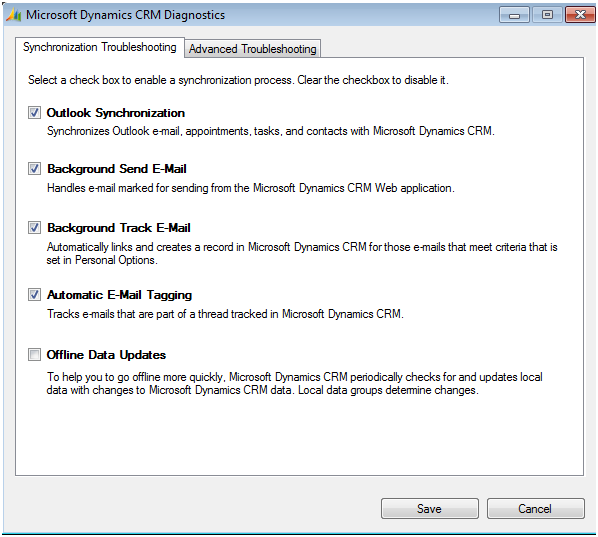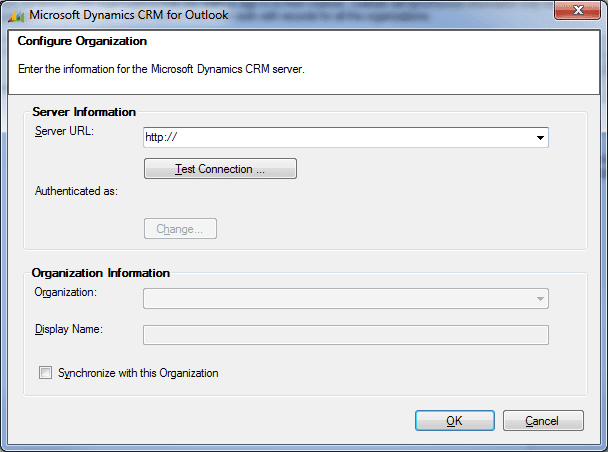- Microsoft Dynamics Crm For Outlook 2016
- Microsoft Dynamics Crm For Outlook Cannot Insert Duplicate Key
To set up Dynamics 365 for Outlook on a user’s computer, you need to install the software, and then configure it. This topic describes how to set up and configure Dynamics 365 for Outlook, and also how to enable multi-factor authentication (MFA) through OAuth. Using MFA can help make client authentication more secure, especially for mobile users.
For information about installing Dynamics 365 for Outlook at a command prompt (silent installation), see Install Microsoft Dynamics 365 for Outlook using a Command Prompt.
Nov 13, 2017 Hello. I am using D365 Online and Exchange On-Premise. My aim is to create Contacts in Dynamics 365 so that all these Contacts will be automatically synchronized with the Outlook(as in appear in Outlook Contacts list). Mar 11, 2020 Running Microsoft Dynamics CRM 2011 for Outlook on Windows 8 or with Microsoft Office 2013 requires Microsoft Dynamics CRM 2011 Update Rollup 11 or a later update rollup. For more information, see Unable to configure the Microsoft Dynamics CRM 2011 Outlook client on a Windows 8 computer and Support with Microsoft Dynamics CRM 2011 and Microsoft. Verify a supported version of CRM for Outlook is installed. Sign into your CRM Online web application via your web browser. Click the settings button in the upper-right corner of the screen. Click Apps for Dynamics CRM.

For information about installing Dynamics 365 for Outlook using System Center Configuration Manager (SCCM), see the download Use SCCM to install Dynamics 365 for Outlook.
Important
- You can’t install Dynamics 365 for Outlook on a computer running Microsoft Exchange Server.
- Tracking activities is not supported when Dynamics 365 App for Outlook and Dynamics 365 for Outlook are used together by the same user.
Install Dynamics 365 for Outlook
Microsoft Dynamics Crm For Outlook 2016

Microsoft Dynamics Crm For Outlook Cannot Insert Duplicate Key
You can add offline capability for the user either during this installation or at a later time.
Tip
If you encounter an issue installing, connecting, or enabling Dynamics 365 for Outlook with your Customer Engagement organization, use the Microsoft Support and Recovery Assistant to diagnose and fix the issue. You’ll need to sign in to the diagnostics tool with your Customer Engagement credentials.
Meet the Dynamics 365 for Outlook requirements specified in Microsoft Dynamics 365 for Outlook hardware requirements and Dynamics 365 for Outlook support matrixes.
Log on to the computer as a local administrator.
Make sure that the latest Microsoft Office updates are installed, including all security updates. To verify, visit Microsoft Update.
Locate and run the appropriate installation file by choosing one of the following methods:
To install from the web (version 8.x), go to Microsoft Dynamics CRM 2016 for Microsoft Office Outlook (Outlook Client), and then download and run the executable file that matches the installed Microsoft Office architecture.
To install from the web (version 9.0), go to Dynamics 365 apps for Outlook, version 9.0 (Outlook client), and then download and run the executable file that matches the installed Microsoft Office architecture.
Note
If you have updated your Dynamics 365 apps organziation to version 9.0 and the Dynamics 365 for Outlook client does not connect then you may need to install TLS 1.2. For more information, Install TLS.
On the License Agreement page, review the information. If you accept the license agreement, select I accept the license agreement, and then click Next.
If the Get Recommended Updates page appears, indicate whether you want to obtain updates through the Microsoft Update program, and then click Next.
Note
Microsoft releases improvements to Dynamics 365 for Outlook as software updates. If you click Get Recommended Updates, those updates will be installed automatically. The exact level of automation, for example, whether any user interaction is required during the installation, is determined by the group policy of your organization.
Click Install Now or Options.
To install Dynamics 365 for Outlook with offline capability, click Options, select Offline Capability on the Customize Installation page, and then click Install Now. Although offline capability lets you run Dynamics 365 for Customer Engagement without a network or Internet connection, it does require the installation of additional technologies and places more demand on your computer’s processor and memory. For more information about the minimum recommended requirements, see Microsoft Dynamics 365 for Outlook hardware requirements.
To install Dynamics 365 for Outlook without offline capability, click Install Now.
Important
If you don’t install offline capability at this point, the user will initially have no offline capability. If you click Install Now, the Outlook user can add offline capability later by clicking Go Offline in Outlook.
The program features are installed and a progress indicator is displayed. You may be asked to restart your computer to complete the installation.
On the completion page of the Microsoft Dynamics 365 apps for Microsoft Office Outlook Setup wizard, click Close.
Configure Dynamics 365 for Outlook

After Dynamics 365 for Outlook is installed, it must be configured. When you restart Outlook after you’ve installed Dynamics 365 for Outlook, the configuration wizard starts automatically.
Note
If you don’t want to configure Dynamics 365 for Outlook immediately after you install it, click Cancel. A Configure Microsoft Dynamics 365 for Outlook button then appears on the Outlook toolbar and will remain there until you configure Dynamics 365 for Outlook.
If the wizard doesn’t start automatically, you can start it as follows: On the Start screen, click Configuration Wizard or on earlier versions of Windows click Start > All Programs > Microsoft Dynamics 365 apps, and then click Configuration Wizard. Alternatively, click Configure Microsoft Dynamics 365 for Outlook on the Dynamics 365 apps tab in Outlook.
If you encounter an issue configuring Dynamics 365 for Outlook with your Customer Engagement organization, use the Microsoft Dynamics CRM for Outlook Configuration Diagnostic to fix the issue. You’ll need to sign in to the diagnostics tool with your Customer Engagement credentials.
To add an organization, choose one of the following:
- To connect to a Dynamics 365 for Customer Engagement organization, choose Dynamics 365 apps from the drop-down list.
Click Connect.
If you are prompted for credentials, select from the following options.
- For a Dynamics 365 for Customer Engagement organization, enter your Microsoft Online Services user name and password, and then click OK. This information should have been sent to you in email when your account was added.
Click Close.
If you’re a member of more than one organization, restart the Configuration Wizard to designate a different organization as your current organization.
Enable multi-factor authentication through OAuth
In the Microsoft Dynamics 365 for Outlook Configuration Wizard, System Administrators can enable multi-factor authentication through the OAuth 2.0 Framework. OAuth 2.0 is an open framework for authorization that lets users provide access tokens, instead of credentials, to access data hosted by a given service provider (such as Dynamics 365 apps). Using MFA can help make client authentication more secure, especially for mobile users. Dynamics 365 apps versions of Dynamics 365 for Customer Engagement can take advantage of MFA.. Customer Engagement automatically uses OAuth.

If you have upgraded your authentication server to use OAuth prior to installing Dynamics 365 for Outlook, Dynamics 365 for Outlook will automatically check for and use OAuth for MFA. Users will see the OAuth sign-in form the first time they use Dynamics 365 for Outlook.
If you upgrade your authentication server to use OAuth after rolling out Dynamics 365 for Outlook, you have two options to set Dynamics 365 for Outlook to use OAuth.
Reconfigure Dynamics 365 for Outlook on all computers. Run the Microsoft Dynamics 365 for Outlook Configuration Wizard and remove and re-add your organization.
-- OR --
Use Group Policy to update the following registration key:
HKEY_CURRENT_USERSoftwareMicrosoftMSCRMClient{orgid}.Set
AuthenticationProviderto 0After the registry change, Dynamics 365 for Outlook will automatically check for and use OAuth for MFA.
In addition
You might need to enable the following AD FS endpoint: /adfs/service/trust/13/windowstransport
For information on enabling an endpoint, see Sign in to Microsoft 365, Azure, or Intune fails after you change the federation service endpoint.